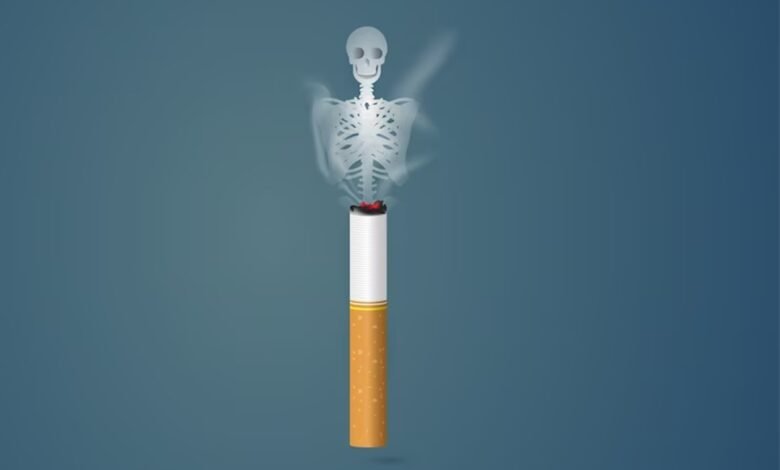Smoking and Oral Cancer: What You Need to Know

The haunting link between smoking and oral cancer is an undeniable reality in the world of public health. As we delve into this critical topic, it’s crucial to recognize that smoking, whether in the form of cigarettes, cigars, or smokeless tobacco, is one of the most significant risk factors for oral cancer. In this comprehensive exploration, we will unravel the intricate relationship between smoking and the development of oral cancer, shedding light on the profound health consequences that stem from this lethal connection.
Tobacco’s Deadly Impact: Smoking is a global epidemic with dire consequences, and one of its most sinister repercussions is its role in oral cancer. Tobacco smoke contains a cocktail of harmful chemicals and carcinogens that, when exposed to the delicate tissues of the mouth and throat, can lead to cellular mutations and the formation of cancerous lesions. This article will delve into the mechanisms by which smoking exerts its devastating effects on oral health, including the various types of oral cancer associated with tobacco use. By understanding the profound risks posed by smoking, we can take steps towards prevention and early detection, ultimately aiming
Understanding Oral Cancer
Smoking and Oral Cancer: Oral cancer refers to cancers that develop in the mouth or throat. It can affect various parts of the oral cavity, including the lips, tongue, gums, inner lining of the cheeks, and the roof or floor of the mouth. While oral cancer may not be as well-known as some other forms of cancer, it can be just as deadly if not detected and treated early.
Oral cancer typically begins as abnormal cell growth, often in the form of a tumor or lesion. These abnormal cells can invade nearby tissues and spread to other parts of the body, leading to more severe health complications.
While oral cancer can affect anyone, certain factors can increase the risk of its development. These risk factors include:
Tobacco Use
Tobacco use, whether through smoking or chewing, is one of the primary risk factors for oral cancer. The harmful chemicals in tobacco products can damage the cells in your mouth, making them more prone to becoming cancerous.
Excessive Alcohol Consumption
Heavy and prolonged alcohol consumption is another significant risk factor. Alcohol can irritate the cells in your mouth and throat, making them more susceptible to the effects of carcinogens.
Human Papillomavirus (HPV)
Some strains of HPV, a common sexually transmitted infection, have been linked to oral cancer. Engaging in safe sex practices and getting vaccinated against HPV can reduce this risk.
Family History
A family history of oral cancer or a history of cancer in general may increase your susceptibility to this disease. It’s essential to inform your healthcare provider if you have a family history of cancer.
Poor Diet
A diet lacking in fruits and vegetables, which are rich in essential nutrients and antioxidants, may contribute to the development of oral cancer. These nutrients help protect your cells from damage.
Sun Exposure
Excessive sun exposure can increase the risk of lip cancer, particularly for individuals with fair skin. Using lip balm with sunblock and wearing a wide-brimmed hat can help reduce this risk.
Age and Gender
Oral cancer is more common in older individuals, typically those over the age of 45. Additionally, men are more likely to develop oral cancer than women.
Understanding these risk factors is crucial because they provide insight into the importance of prevention and early detection. By recognizing these factors and taking proactive steps to minimize risk, such as quitting smoking, moderating alcohol consumption, and practicing safe sex, individuals can significantly reduce their chances of developing oral cancer.
In the following sections of this article, we will delve deeper into the link between smoking and oral cancer, the signs and symptoms to watch out for, diagnosis, treatment options, and more. It’s essential to stay informed and proactive in safeguarding your oral health.
Read more: Understanding Lung Cancer: Causes, Symptoms, and Treatment Options
The Link Between Smoking and Oral Cancer
Smoking and Oral Cancer: The connection between smoking and oral cancer is undeniable. Smoking, whether it’s cigarettes, cigars, or pipes, exposes your oral tissues to harmful chemicals and carcinogens. These substances can damage the DNA in your cells, leading to the uncontrolled growth of cancerous cells in your mouth.
Risk Factors Associated with Smoking
Smoking and Oral Cancer: Aside from the direct link between smoking and oral cancer, several risk factors increase the likelihood of developing this deadly disease:
Frequency and Duration
The more cigarettes you smoke and the longer you smoke them, the higher your risk of oral cancer becomes.
Type of Tobacco
Different types of tobacco products contain varying levels of harmful substances. For instance, chewing tobacco and snuff are known to be particularly dangerous for oral health.
Secondhand Smoke
Even if you don’t smoke, exposure to secondhand smoke can increase your risk of oral cancer. Protecting yourself from secondhand smoke is crucial.
Signs and Symptoms of Oral Cancer
Smoking and Oral Cancer: Oral cancer often presents with subtle symptoms that can be mistaken for other conditions. It’s essential to be vigilant and seek medical attention if you notice any of the following:
Persistent Mouth Sores
Sores that don’t heal within two weeks should be evaluated by a healthcare professional.
Red or White Patches
Unexplained red or white patches on the lips, tongue, or other oral tissues should be examined promptly.
Difficulty Swallowing or Speaking
Smoking and Oral Cancer: Oral cancer can lead to difficulties in swallowing, speaking, or moving your tongue or jaw.
Changes in Voice
A persistent hoarseness or change in voice can be a sign of cancer affecting the throat.
Diagnosis and Staging
Smoking and Oral Cancer: If your dentist or doctor suspects oral cancer, they will conduct a thorough examination and may order further tests, such as biopsies and imaging scans, to determine the extent of the disease. Staging helps determine the appropriate treatment plan.
Treatment Options
Treatment for oral cancer depends on the stage and location of the cancer. Options may include surgery, radiation therapy, chemotherapy, or a combination of these. Early detection significantly improves the chances of successful treatment.
Prevention Strategies
Smoking and Oral Cancer: Preventing oral cancer starts with making healthy lifestyle choices:
Quit Smoking
The most effective way to reduce your risk of oral cancer is to quit smoking.
Limit Alcohol Consumption
Excessive alcohol consumption can increase your risk, so it’s essential to drink in moderation.
Protect Yourself from HPV
Some strains of the human papillomavirus (HPV) are linked to oral cancer. Get vaccinated and practice safe sex.
Support and Resources
If you or a loved one is dealing with oral cancer, remember that you’re not alone. Numerous support groups and resources are available to help you navigate this challenging journey.
Read more: Breast Cancer Treatment Options: Surgery, Therapy, and Beyond
Conclusion
Smoking and oral cancer are closely intertwined, making it crucial to raise awareness about the risks. By understanding the connection between smoking and oral cancer, recognizing the signs and symptoms, and taking steps to prevent it, you can protect your oral health and overall well-being.
Understanding the connection between smoking and oral cancer, as well as being aware of the risk factors and signs and symptoms, is the first step in protecting your oral health. By taking proactive measures such as quitting smoking, moderating alcohol consumption, practicing safe sex to prevent HPV infection, and maintaining a healthy diet, you can significantly reduce your risk of developing this potentially deadly disease.
Remember that if you or a loved one is facing the challenges of oral cancer, you are not alone. There are numerous support groups and resources available to provide guidance, emotional support, and valuable information to help you navigate this journey.
FAQs
Q1: Can smokeless tobacco, like snuff, also cause oral cancer?
Yes, smokeless tobacco products can increase the risk of oral cancer significantly due to their direct contact with oral tissues.
Q2: Is it possible to reverse the damage to oral tissues caused by smoking?
While quitting smoking can improve oral health and reduce the risk of cancer, some damage may be irreversible. Early intervention is key.
Q3: How often should I have oral cancer screenings?
Regular dental check-ups usually include oral cancer screenings. It’s recommended to have these check-ups at least every six months.
Q4: Are there any specific foods that can lower the risk of oral cancer?
A diet rich in fruits and vegetables, particularly those high in antioxidants, can help reduce the risk of oral cancer.
Q5: What should I do if I suspect I have oral cancer symptoms?
If you notice any potential symptoms of oral cancer, such as persistent sores or patches, consult a healthcare professional promptly for an evaluation.







